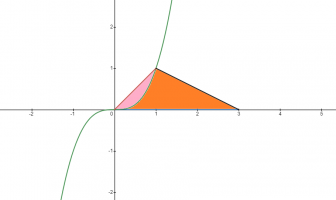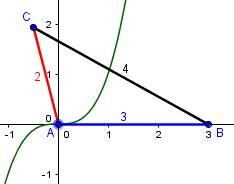
I need to find the orange area. The dimensions of the triangle legs in the picture are wrong. I drew them like this to make the problem visualized easily. The length of the blue leg is 3 units, black 2 units, and red 1 unit. The function y=x3 passes through the triangle. The function is not necessary passes through the peak of the triangle as the drawing is wrong.
I don't understand why some of you wants to ban me, especially those who thinks I am not trying to show some efforts.
My try is to set an integral and solve it to find the area, but this would be easy if there are no triangle involved. I have no idea how to merge the function with the triangle to create an integral.
Any help would be appreciated.

